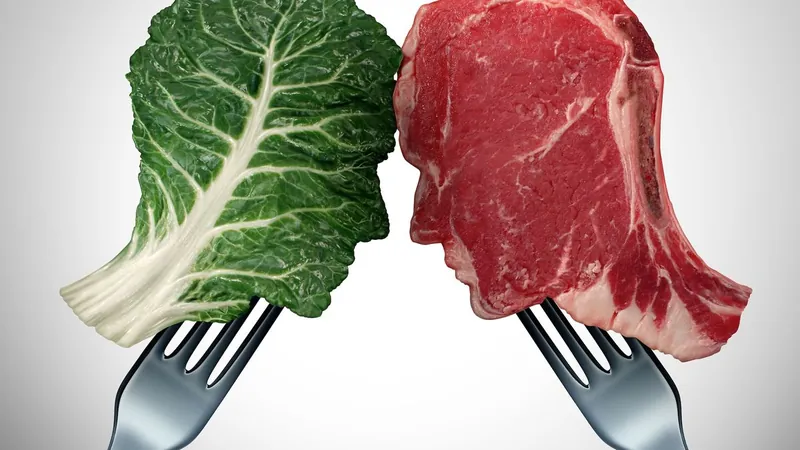
The Protein Powerhouse: Why Meat Leaves Vegetables in the Dust
2024-10-12
Author: Jia
For vegetarians and vegans, achieving sufficient protein intake requires a bit of culinary creativity. While meat replacements like tofu may be popular, they often fall short in protein density compared to meat. For instance, chicken breast boasts approximately 31 grams of protein per 100 grams, starkly contrasting with tofu's mere 8 grams.
So, why does meat pack such a heavier protein punch on a biological level? Christi Calhoun, a scientific communication resource officer at the American Meat Science Association, explains that plants and animals evolve with distinct cellular necessities, leading to different compositions.
"Animals store more protein in their tissues to support vital functions like muscle movement, energy metabolism, and cellular repair," Calhoun reveals. Proteins play crucial roles as enzymes, hormones, and muscle fibers – all integral for everyday activity and overall health.
In contrast, plants primarily utilize carbohydrates for structure and energy storage, resulting in naturally lower protein content. While carbohydrates provide energy, they lack the versatility found in proteins, which are essential for a myriad of cellular functions.
But it's not just about how much protein is present – the type of protein also matters. According to Kinga Balogh, a registered dietitian, human bodies can be thought of as crafting unique "beaded necklaces" from various amino acids to create proteins. There are 20 amino acids overall, with nine deemed essential – meaning our bodies can't produce them and we must obtain them through food.
Animal proteins are labeled "complete" because they contain all nine essential amino acids, whereas many plant proteins are classified as "incomplete" due to lacking one or more of these necessary amino acids. This distinction has significant implications for nutrition.
Interestingly, absorption and utilization of these proteins differ. Calhoun notes that animal proteins come with higher bioavailability, meaning the body can more readily digest and utilize them. Unfortunately, many plant proteins contain fibrous materials that hinder efficient digestion, making the process more labor-intensive for our bodies.
To offer a clearer view of protein quality, the FDA and WHO collaborated on a scale known as the Protein Digestibility Corrected Amino Acid Score (PDCAAS), which ranks protein sources from 0 to 1. With scores fluctuating from beef and eggs (between 0.9 and 1) to peanuts at 0.52, the scores illustrate the comparative quality of protein found in different foods. Notably, soy, the backbone of many plant-based products, achieves a commendable score of 0.92.
Given these factors, a simple comparison of total protein content can mislead. Calhoun warns against relying solely on crude protein metrics, emphasizing that understanding protein quality is vital to a balanced diet. While meat is often a denser, complete protein source, vegetarians and vegans can strategize by combining various incomplete proteins to create balanced meals that give access to all essential amino acids.
Examples of advantageous pairings include combining whole-wheat toast with nut butter, beans with rice, or a warming lentil soup paired with a hearty whole-grain roll.
Ultimately, while meat undeniably leads the protein race, Balogh advocates for a holistic perspective on nutrition, suggesting that simply focusing on protein intake may not be the best approach for overall health.


 Brasil (PT)
Brasil (PT)
 Canada (EN)
Canada (EN)
 Chile (ES)
Chile (ES)
 España (ES)
España (ES)
 France (FR)
France (FR)
 Hong Kong (EN)
Hong Kong (EN)
 Italia (IT)
Italia (IT)
 日本 (JA)
日本 (JA)
 Magyarország (HU)
Magyarország (HU)
 Norge (NO)
Norge (NO)
 Polska (PL)
Polska (PL)
 Schweiz (DE)
Schweiz (DE)
 Singapore (EN)
Singapore (EN)
 Sverige (SV)
Sverige (SV)
 Suomi (FI)
Suomi (FI)
 Türkiye (TR)
Türkiye (TR)